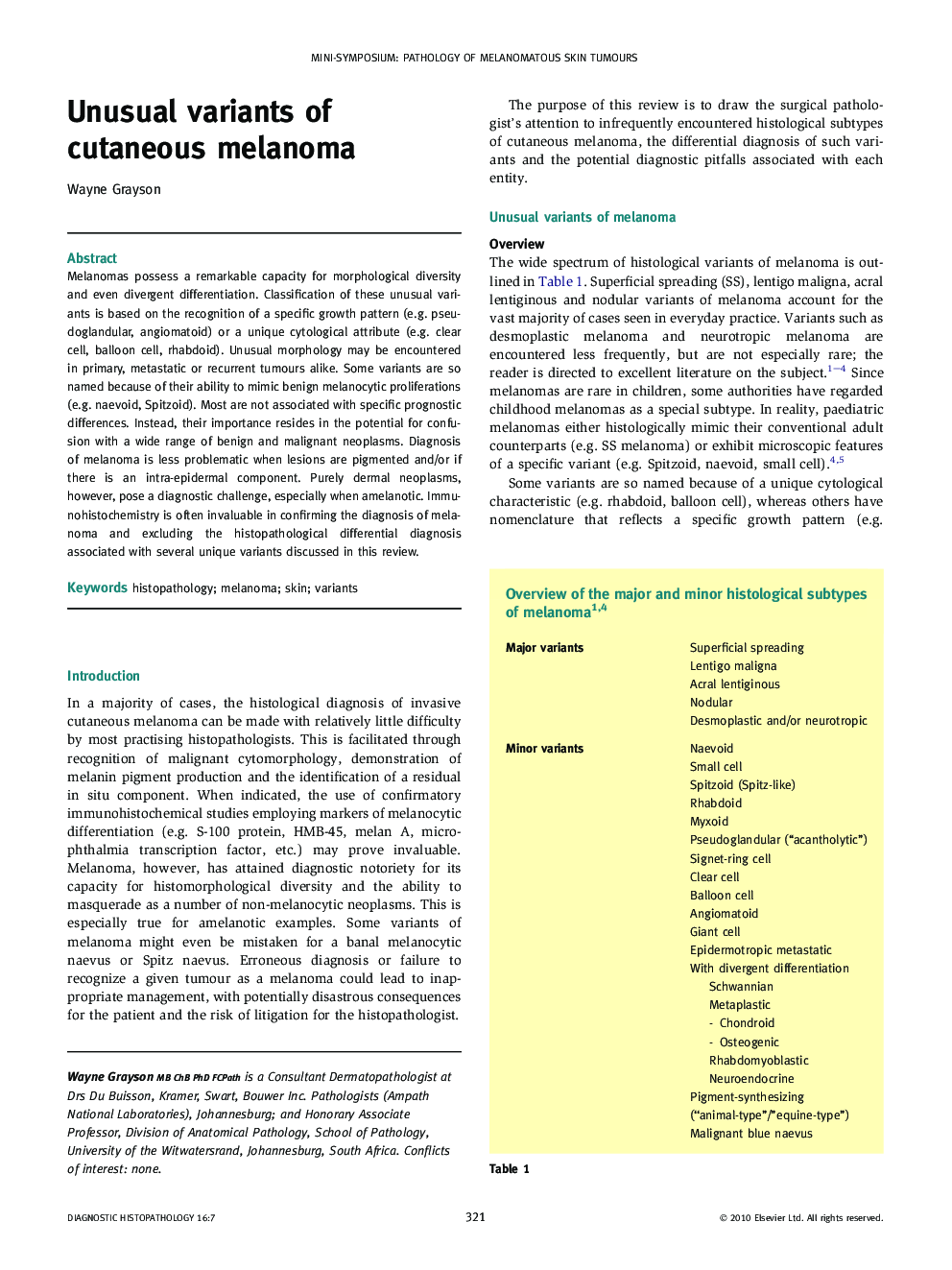| Article ID | Journal | Published Year | Pages | File Type |
|---|---|---|---|---|
| 4131639 | Diagnostic Histopathology | 2010 | 9 Pages |
Abstract
Melanomas possess a remarkable capacity for morphological diversity and even divergent differentiation. Classification of these unusual variants is based on the recognition of a specific growth pattern (e.g. pseudoglandular, angiomatoid) or a unique cytological attribute (e.g. clear cell, balloon cell, rhabdoid). Unusual morphology may be encountered in primary, metastatic or recurrent tumours alike. Some variants are so named because of their ability to mimic benign melanocytic proliferations (e.g. naevoid, Spitzoid). Most are not associated with specific prognostic differences. Instead, their importance resides in the potential for confusion with a wide range of benign and malignant neoplasms. Diagnosis of melanoma is less problematic when lesions are pigmented and/or if there is an intra-epidermal component. Purely dermal neoplasms, however, pose a diagnostic challenge, especially when amelanotic. Immunohistochemistry is often invaluable in confirming the diagnosis of melanoma and excluding the histopathological differential diagnosis associated with several unique variants discussed in this review.
Keywords
Related Topics
Health Sciences
Medicine and Dentistry
Pathology and Medical Technology
Authors
Wayne Grayson,
